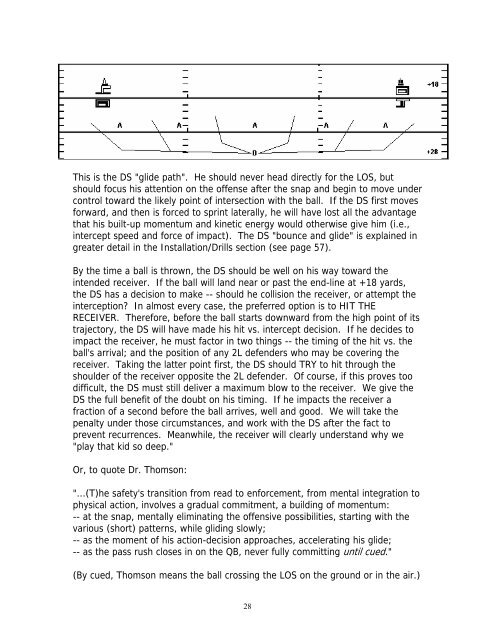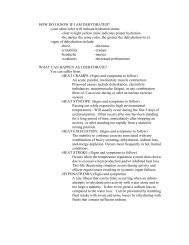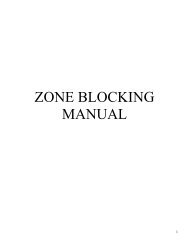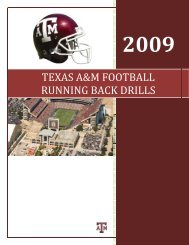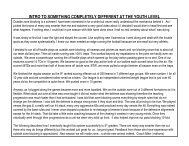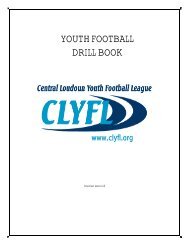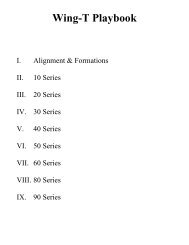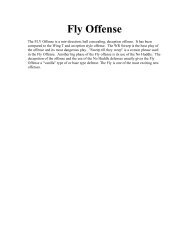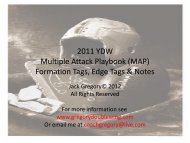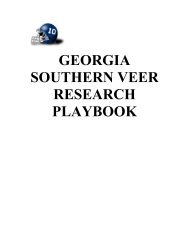You also want an ePaper? Increase the reach of your titles
YUMPU automatically turns print PDFs into web optimized ePapers that Google loves.
This is the DS "glide path". He should never head directly for the LOS, butshould focus his attention on the offense after the snap and begin to move undercontrol toward the likely point of intersection with the ball. If the DS first movesforward, and then is forced to sprint laterally, he will have lost all the advantagethat his built-up momentum and kinetic energy would otherwise give him (i.e.,intercept speed and force of impact). The DS "bounce and glide" is explained ingreater detail in the Installation/Drills section (see page 57).By the time a ball is thrown, the DS should be well on his way toward theintended receiver. If the ball will land near or past the end-line at +18 yards,the DS has a decision to make -- should he collision the receiver, or attempt theinterception? In almost every case, the preferred option is to HIT THERECEIVER. Therefore, before the ball starts downward from the high point of itstrajectory, the DS will have made his hit vs. intercept decision. If he decides toimpact the receiver, he must factor in two things -- the timing of the hit vs. theball's arrival; and the position of any 2L defenders who may be covering thereceiver. Taking the latter point first, the DS should TRY to hit through theshoulder of the receiver opposite the 2L defender. Of course, if this proves toodifficult, the DS must still deliver a maximum blow to the receiver. We give theDS the full benefit of the doubt on his timing. If he impacts the receiver afraction of a second before the ball arrives, well and good. We will take thepenalty under those circumstances, and work with the DS after the fact toprevent recurrences. Meanwhile, the receiver will clearly understand why we"play that kid so deep."Or, to quote Dr. Thomson:"...(T)he safety's transition from read to enforcement, from mental integration tophysical action, involves a gradual commitment, a building of momentum:-- at the snap, mentally eliminating the offensive possibilities, starting with thevarious (short) patterns, while gliding slowly;-- as the moment of his action-decision approaches, accelerating his glide;-- as the pass rush closes in on the QB, never fully committing until cued."(By cued, Thomson means the ball crossing the LOS on the ground or in the air.)28


